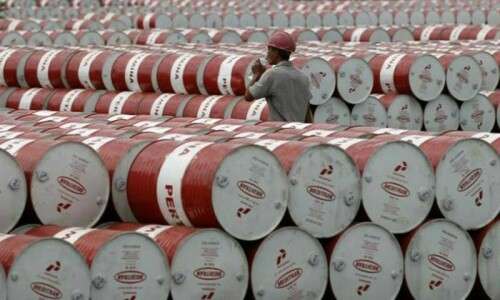Introduction
In recent months, Pakistan has witnessed a notable surge in crude oil imports, reflecting an uptick in local petroleum production and a significant boost to exports. According to the latest data, the country’s crude oil imports rose by 17.81% during the first five months of FY25, a positive indicator of heightened economic activity, especially in the transportation and industrial sectors. This surge in crude imports is expected to contribute positively to the overall economic growth, as local refineries ramp up their output, thereby increasing both the domestic supply of petroleum products and export volumes.
This article explores the impact of rising crude oil imports on Pakistan’s economy, the subsequent boost in exports, and the effects on the petroleum industry.
Increased Crude Oil Imports: A Key Indicator of Economic Growth
Crude Oil Import Data
Preliminary data from the Pakistan Bureau of Statistics (PBS) reveals that petroleum crude imports in the July-November period of FY25 have increased substantially. Imports of crude oil were up by 17.81% in quantity and 5.44% in value, reaching 3.974 million tonnes compared to 3.373 million tonnes during the same period last year. This growth is an encouraging sign, pointing to robust activity within Pakistan’s transportation and industrial sectors.
Factors Driving the Increase
The surge in crude oil imports is largely driven by increased demand for transportation fuels, which have grown in tandem with higher business activity and trade across the country. Refineries are operating at higher capacities to meet the demand, ensuring a steady supply of refined products such as diesel, petrol, and kerosene. This, in turn, has led to an increase in the overall production of petroleum products, which has a direct impact on economic performance.
Boost in Petroleum Product Production and Export Growth
Local Petroleum Production
The increased crude oil imports have resulted in higher capacity utilization at local refineries, which have ramped up production of various petroleum products. The PBS data for the first five months of FY25 reveals that the output of petroleum products rose by 1.33% year-on-year, with production reaching higher levels across almost all product categories.
Key products that showed growth include high-speed diesel (HSD), which saw an increase of 3.31% during this period. HSD, a crucial fuel for transportation and agriculture, plays a vital role in driving the economy’s growth by supporting the movement of goods and services across the country. Other products, such as furnace oil and jute batching oil, also posted positive growth. The production of furnace oil rose by 0.86%, while jute batching oil saw an impressive surge of 67.33%.
However, there were a few categories where production saw a decline, including jet fuel (down by 12.44%) and liquefied petroleum gas (LPG), which fell by 8.96%. Despite these setbacks, the overall output in petroleum products has remained resilient, and these fluctuations in production are often influenced by seasonal variations and demand cycles.
Impact on Exports
The increase in local production of petroleum products has contributed significantly to the rise in exports. In FY25’s first five months, exports of petroleum products surged by an extraordinary 230.33% year-on-year, reaching $236.71 million. The export growth reflects strong international demand for Pakistani petroleum products, particularly naphtha and petroleum crude.
Naphtha, which topped the list of petroleum exports, recorded a growth of 30.11%, reaching 27,127 tonnes. Similarly, petroleum product exports, excluding top naphtha, saw a growth of 245.34%, with total exports reaching 417,539 tonnes compared to 120,905 tonnes during the same period last year. The export of petroleum crude, which had no exports in FY24’s corresponding period, also saw an encouraging rise, with 40,552 tonnes exported.
The sharp increase in exports not only boosts Pakistan’s foreign exchange reserves but also reflects growing global demand for its refined petroleum products, a positive development for the country’s balance of trade.
Analysis of Crude Oil Imports and Exports in FY25
Crude Oil Imports: A Long-Term Trend?
The steady rise in crude oil imports throughout FY25 suggests a continued demand for petroleum products within Pakistan, driven by an expanding economy and increasing industrial activity. Although global oil prices are volatile, Pakistan’s increased imports and the accompanying rise in production reflect the resilience of local refineries in adapting to market demands.
Export Potential and Future Growth
With the increase in local production and higher export volumes, Pakistan’s petroleum industry is poised for further growth. The export growth seen in the first five months of FY25 is likely to continue, provided the global market remains stable. The key to sustaining this growth will be maintaining the efficiency of refineries, ensuring a steady supply of crude oil, and addressing any fluctuations in global oil prices.
Economic Impact of Rising Crude Imports and Petroleum Exports
Positive Impact on GDP Growth
The rise in crude oil imports and subsequent increase in petroleum exports is expected to provide a boost to Pakistan’s economic growth in FY25. The higher production and export of petroleum products contribute to the industrial sector’s growth, supporting key sectors like transportation, agriculture, and manufacturing.
Moreover, the increased export revenue helps strengthen Pakistan’s trade balance and foreign exchange reserves, providing a cushion against external economic pressures. As a result, the country’s GDP growth is likely to see an upward trajectory, supported by a strong petroleum sector.
Energy Security and Refinery Expansion
As crude oil imports rise, there is an increasing need for Pakistan to enhance its energy security and improve refinery infrastructure. Strengthening refinery capacity and reducing dependency on imports will be crucial in ensuring that the country can meet its growing demand for petroleum products without being overly reliant on external markets.
Frequently Asked Questions (FAQs)
1. What caused the rise in crude oil imports in Pakistan?
The increase in crude oil imports is primarily due to higher demand for petroleum products, driven by robust economic activity and increased transportation needs across the country.
2. How have local refineries responded to the increase in crude oil imports?
Local refineries have increased their capacity utilization to produce more petroleum products, thereby boosting domestic supply and exports.
3. What are the key petroleum products seeing growth in production?
High-speed diesel, furnace oil, and jute batching oil have seen significant growth in production. Diesel, in particular, is essential for the transportation and agriculture sectors.
4. How has Pakistan’s petroleum exports performed in FY25?
Pakistan’s petroleum exports have surged by 230.33% in the first five months of FY25, with significant growth in naphtha and petroleum crude exports.
5. What is the long-term outlook for Pakistan’s petroleum sector?
The outlook is positive, with growing export potential and continued demand for petroleum products. However, the sector will need to improve refinery capacity and manage global oil price fluctuations to maintain sustainable growth.
Conclusion
The rising crude oil imports and subsequent increase in petroleum product exports indicate a positive trend for Pakistan’s economy, signaling growth in key sectors and improved economic performance. While challenges remain in managing global oil price fluctuations, the country’s petroleum industry is showing resilience and potential for long-term growth. With ongoing efforts to enhance refinery infrastructure and energy security, Pakistan is well-positioned to capitalize on its growing petroleum export market.
MUST READ
pm-shehbaz-forms-committee-to-negotiate-with-pti


